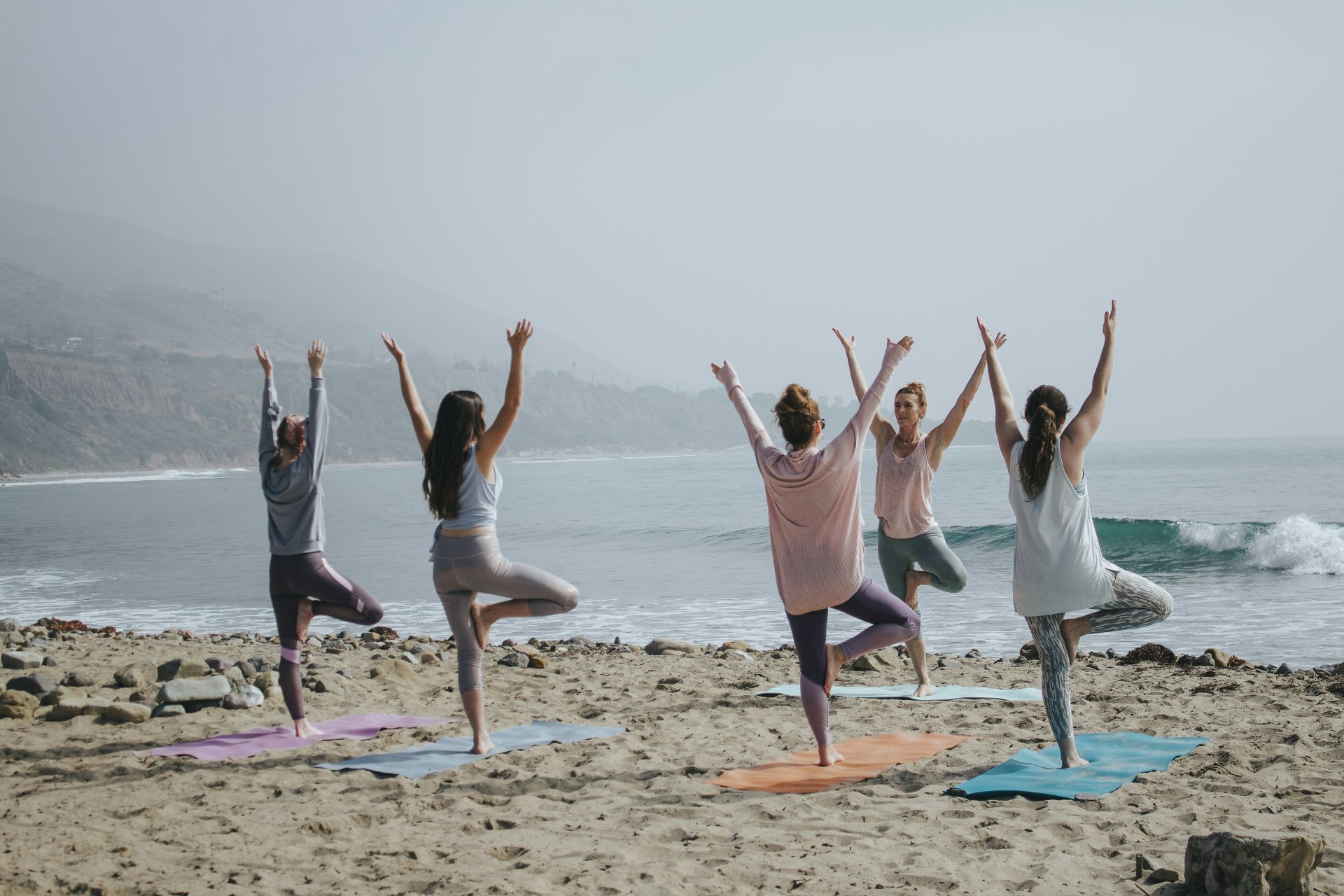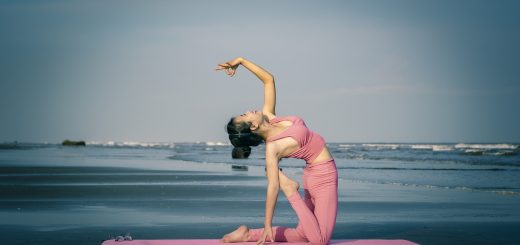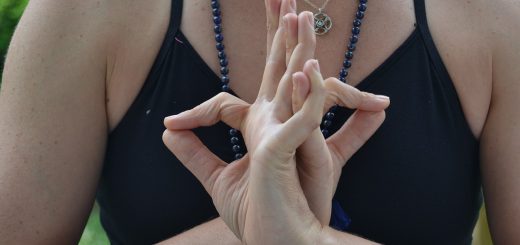Hatha Yoga: Classic Yoga Poses for Balance

Hey there, amazing readers! 🖐️ Just a quick note: yes, we know there are a lot of ads here. Trust us, we get it—it’s not the prettiest look, but they help us keep this blog alive and kicking. Those pesky little ads cover the costs of all the behind-the-scenes magic, from hosting and tech stuff to creating content we hope you’ll love.
We’re committed to delivering quality posts, and your support (even just sticking around despite the ads) means everything to us. So, bear with us, and thanks for helping us keep the good vibes rolling. Now, on to the fun stuff! 😉
TRANSLATE BUTTON AT THE END OF THE ARTICLE
A Quick Overview
Hatha Yoga is a traditional form of yoga that focuses on physical postures, breathing techniques, and meditation.
It aims to balance the body and mind while promoting overall health and well-being.
Classic yoga poses play a crucial role in achieving this balance by improving strength, flexibility, and concentration.
In this article, we will explore the benefits of classic yoga poses for balance and how they can enhance your yoga practice.
Benefits of Classic Yoga Poses
Classic yoga poses, also known as asanas, offer a wide range of benefits for the body and mind.
They help improve flexibility, strength, and posture, while also promoting relaxation and reducing stress.
By practicing these poses regularly, you can increase your overall sense of well-being and enhance your physical and mental health.
Additionally, classic yoga poses can help improve balance, coordination, and focus, making them essential for a well-rounded yoga practice.
Importance of Balance in Yoga
Balance is a fundamental aspect of yoga, both on and off the mat.
In yoga, balance refers to the ability to maintain stability and control in various poses.
Physical balance helps strengthen the body and prevent injuries, while mental balance promotes clarity, focus, and emotional well-being.
By incorporating classic yoga poses that focus on balance, you can improve your overall practice and cultivate a sense of harmony within yourself.
Standing Poses for Stability
Standing poses are essential for building strength, stability, and grounding in yoga.
Poses like Tadasana (Mountain Pose), Virabhadrasana (Warrior Pose), and Trikonasana (Triangle Pose) help improve posture, balance, and concentration.
These poses engage the legs, core, and back muscles, promoting alignment and stability throughout the body.
By practicing standing poses regularly, you can enhance your strength, flexibility, and overall sense of balance.
Tadasana (Mountain Pose): Stand tall with your feet hip-width apart, arms by your sides, and palms facing forward.
Engage your core, lift your chest, and lengthen your spine.
Hold for a few breaths.
Virabhadrasana (Warrior Pose): Step one foot back into a lunge position, bend your front knee, and extend your arms overhead.
Keep your back leg straight and strong.
Hold for several breaths, then switch sides.
Trikonasana (Triangle Pose): Stand with your feet wide apart, extend your arms parallel to the floor, and reach towards one foot while keeping your torso long.
Hold the pose for a few breaths, then switch sides.
Seated Poses for Equilibrium
Seated poses are excellent for promoting equilibrium and relaxation in yoga.
Poses like Sukhasana (Easy Pose), Baddha Konasana (Bound Angle Pose), and Paschimottanasana (Seated Forward Bend) help open the hips, stretch the spine, and calm the mind.
These poses encourage introspection, mindfulness, and inner balance, making them ideal for reducing stress and anxiety.
By incorporating seated poses into your practice, you can improve flexibility, focus, and emotional well-being.
Sukhasana (Easy Pose): Sit cross-legged on the floor, lengthen your spine, and rest your hands on your knees.
Close your eyes, relax your shoulders, and focus on your breath.
Hold the pose for a few minutes.
Baddha Konasana (Bound Angle Pose): Sit with the soles of your feet together, knees bent out to the sides.
Hold your feet and gently fold forward from the hips.
Keep your spine long and breathe deeply.
Hold for several breaths.
Paschimottanasana (Seated Forward Bend): Sit with your legs extended in front of you, inhale to lengthen your spine, then exhale to fold forward from the hips.
Reach for your feet or shins and relax your head towards your legs.
Hold the pose for a few breaths.
Balancing Poses for Strength
Balancing poses are essential for building strength, focus, and stability in yoga.
Poses like Vrikshasana (Tree Pose), Garudasana (Eagle Pose), and Ardha Chandrasana (Half Moon Pose) challenge your balance, coordination, and core strength.
These poses require concentration, mindfulness, and control, helping you develop a deeper connection between your body and mind.
By practicing balancing poses regularly, you can improve your physical strength, mental focus, and overall sense of equilibrium.
Vrikshasana (Tree Pose): Stand tall, shift your weight onto one foot, and place the sole of the other foot on your inner thigh or calf.
Bring your hands to prayer position at your heart and gaze softly ahead.
Hold for several breaths, then switch sides.
Garudasana (Eagle Pose): Stand with your feet hip-width apart, bend your knees slightly, and cross one thigh over the other.
Wrap one arm under the other and bring your palms together.
Lift your elbows and gaze forward.
Hold for a few breaths, then switch sides.
Ardha Chandrasana (Half Moon Pose): Start in a standing position, shift your weight onto one foot, and extend the other leg behind you.
Place your hand on the floor or a block and extend the opposite arm towards the ceiling.
Keep your gaze steady and engage your core.
Hold for several breaths, then switch sides.
Reclining Poses for Relaxation
Reclining poses are perfect for promoting relaxation, stretching, and rest in yoga.
Poses like Supta Baddha Konasana (Reclining Bound Angle Pose), Supta Virasana (Reclining Hero Pose), and Savasana (Corpse Pose) help release tension, calm the mind, and rejuvenate the body.
These poses encourage deep relaxation, mindfulness, and surrender, making them ideal for reducing stress and promoting restful sleep.
By incorporating reclining poses into your practice, you can improve flexibility, mental clarity, and overall well-being.
Supta Baddha Konasana (Reclining Bound Angle Pose): Lie on your back, bring the soles of your feet together, and let your knees fall open to the sides.
Relax your arms by your sides, close your eyes, and breathe deeply into your belly.
Hold the pose for several minutes.
Supta Virasana (Reclining Hero Pose): Kneel on the floor, sit back on your heels, then slowly lower your back to the ground.
Extend your arms overhead and relax your entire body.
Close your eyes, breathe deeply, and surrender to the pose.
Hold for a few minutes.
Savasana (Corpse Pose): Lie on your back with your arms and legs extended, palms facing up.
Close your eyes, relax your entire body, and focus on your breath.
Allow yourself to completely let go and surrender to stillness.
Hold the pose for at least five minutes.
Core Strengthening Poses
Core strengthening poses are essential for building stability, strength, and control in yoga.
Poses like Navasana (Boat Pose), Plank Pose, and Chaturanga Dandasana (Four-Limbed Staff Pose) target the abdominal muscles, back muscles, and pelvic floor, helping improve core strength and posture.
These poses require engagement, balance, and breath control, making them ideal for developing a strong and stable center.
By incorporating core strengthening poses into your practice, you can enhance your overall strength, balance, and body awareness.
Navasana (Boat Pose): Sit on the floor, lift your legs off the ground, and balance on your sitting bones.
Extend your arms forward, engage your core, and lift your chest.
Keep your spine long and breathe deeply.
Hold the pose for several breaths.
Plank Pose: Start in a push-up position with your hands under your shoulders and legs extended behind you.
Engage your core, lengthen your spine, and hold your body in a straight line.
Keep your gaze slightly forward and breathe steadily.
Hold the pose for at least 30 seconds.
Chaturanga Dandasana (Four-Limbed Staff Pose): From Plank Pose, lower your body halfway down, keeping your elbows close to your sides.
Extend your legs back and engage your core.
Keep your body parallel to the ground and hold for a few breaths before moving into the next pose.
Arm Balances for Focus
Arm balances are advanced poses that require strength, focus, and determination in yoga.
Poses like Bakasana (Crow Pose), Sirsasana (Headstand), and Pincha Mayurasana (Feathered Peacock Pose) challenge your upper body strength, core stability, and mental focus.
These poses require courage, concentration, and breath control, making them ideal for developing resilience and confidence on and off the mat.
By practicing arm balances regularly, you can improve your physical strength, mental clarity, and overall sense of focus.
Bakasana (Crow Pose): Squat down, place your hands on the floor shoulder-width apart, and bend your elbows.
Shift your weight forward onto your hands, lift your feet off the ground, and balance on your arms.
Engage your core, gaze forward, and breathe steadily.
Hold the pose for a few breaths.
Sirsasana (Headstand): Start on your hands and knees, interlace your fingers and place the crown of your head on the mat.
Lift your hips and walk your feet closer to your head.
Slowly lift your legs off the ground and extend them towards the ceiling.
Engage your core, press into your forearms, and hold the pose for several breaths.
Pincha Mayurasana (Feathered Peacock Pose): Start in Dolphin Pose with your forearms on the mat and your hips lifted.
Walk your feet closer to your elbows and lift one leg towards the ceiling.
Engage your core, press into your forearms, and lift your other leg off the ground.
Find balance and hold the pose for a few breaths.
Inversions for Grounding
Inversions are powerful poses that help reverse the effects of gravity, promote circulation, and calm the mind in yoga.
Poses like Adho Mukha Svanasana (Downward-Facing Dog), Salamba Sarvangasana (Shoulder Stand), and Viparita Karani (Legs-Up-The-Wall Pose) help improve blood flow, reduce stress, and stimulate the nervous system.
These poses encourage a sense of grounding, relaxation, and mental clarity, making them ideal for enhancing overall well-being.
By incorporating inversions into your practice, you can improve circulation, boost energy levels, and cultivate a deeper connection with yourself.
Adho Mukha Svanasana (Downward-Facing Dog): Start on your hands and knees, tuck your toes, and lift your hips towards the ceiling.
Press into your hands and heels, lengthen your spine, and relax your head between your arms.
Breathe deeply and hold the pose for several breaths.
Salamba Sarvangasana (Shoulder Stand): Lie on your back, lift your legs towards the ceiling, and support your lower back with your hands.
Lift your hips off the ground, extend your legs overhead, and point your toes towards the ceiling.
Engage your core, breathe steadily, and hold the pose for several breaths.
Viparita Karani (Legs-Up-The-Wall Pose): Sit next to a wall with your side body against it, then swing your legs up the wall as you lie back on the floor.
Extend your arms out to the sides, relax your entire body, and close your eyes.
Breathe deeply into your belly and hold the pose for several minutes.
Twists for Alignment
Twists are essential poses for improving alignment, mobility, and detoxification in yoga.
Poses like Parivrtta Trikonasana (Revolved Triangle Pose), Bharadvajasana (Bharadvaja’s Twist), and Ardha Matsyendrasana (Half Lord of the Fishes Pose) help stretch the spine, massage the organs, and release tension in the back.
These poses encourage spinal mobility, digestive health, and emotional release, making them ideal for improving overall well-being.
By incorporating twists into your practice, you can enhance your flexibility, detoxify the body, and promote proper alignment.
Parivrtta Trikonasana (Revolved Triangle Pose): Stand with your feet wide apart, extend your arms parallel to the floor, then twist your torso towards one leg.
Place one hand on the floor or a block and reach the other arm towards the ceiling.
Keep your spine long and gaze up towards your hand.
Hold the pose for several breaths, then switch sides.
Bharadvajasana (Bharadvaja’s Twist): Sit with your legs extended in front of you, bend your knees, and twist your torso to one side.
Place one hand behind you for support and the other hand on the opposite knee.
Lengthen your spine, twist from your belly, and gaze over your shoulder.
Hold the pose for several breaths, then switch sides.
Ardha Matsyendrasana (Half Lord of the Fishes Pose): Sit with one leg bent and the other leg crossed over the knee.
Twist your torso towards the bent leg, place one hand behind you and the other elbow on the outside of the knee.
Lengthen your spine, twist from your belly, and gaze over your shoulder.
Hold the pose for several breaths, then switch sides.
Conclusion: Incorporating Balance into Your Practice
Incorporating classic yoga poses for balance into your practice is essential for improving strength, flexibility, and mental focus.
By practicing standing poses for stability, seated poses for equilibrium, balancing poses for strength, reclining poses for relaxation, core strengthening poses, arm balances for focus, inversions for grounding, and twists for alignment, you can enhance your overall well-being and cultivate a deeper connection with yourself.
Remember to listen to your body, breathe deeply, and stay present in each pose to experience the full benefits of a balanced yoga practice.
Balance is not just physical; it’s a state of harmony between the body, mind, and spirit.
Embrace the journey towards balance and enjoy the transformative power of classic yoga poses in your practice.

The Enlightenment Journey is a remarkable collection of writings authored by a distinguished group of experts in the fields of spirituality, new age, and esoteric knowledge.
This anthology features a diverse assembly of well-experienced authors who bring their profound insights and credible perspectives to the forefront.
Each contributor possesses a wealth of knowledge and wisdom, making them authorities in their respective domains.
Together, they offer readers a transformative journey into the realms of spiritual growth, self-discovery, and esoteric enlightenment.
The Enlightenment Journey is a testament to the collective expertise of these luminaries, providing readers with a rich tapestry of ideas and information to illuminate their spiritual path.
Our Diverse Expertise 🌟
While our primary focus is on spirituality and esotericism, we are equally passionate about exploring a wide range of other topics and niches 🌍📚. Our experienced team is dedicated to delivering high-quality, informative content across various subjects ✨.
To ensure we provide the most accurate and valuable insights, we collaborate with trusted experts in their respective domains 🧑🏫👩🏫. This allows us to offer well-rounded perspectives and knowledge to our readers.
Our blog originally focused on spirituality and metaphysics, but we’ve since expanded to cover a wide range of niches. Don’t worry—we continue to publish a lot of articles on spirituality! Frequently visit our blog to explore our diverse content and stay tuned for more insightful reads.





















